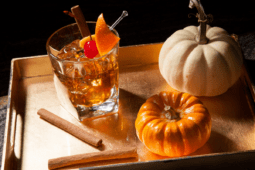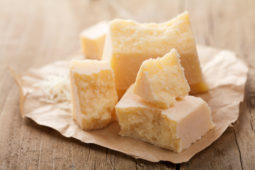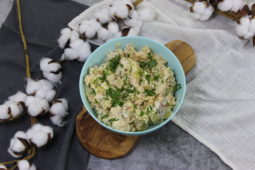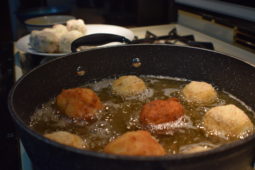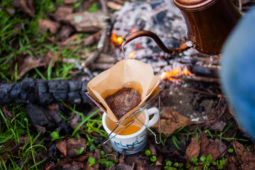The Bourbon Family Tree… and What You Can Learn from It

GQ shares this fascinating chart excerpted from the new book The Kings County Distillery Guide to Urban Moonshining: How to Drink and Make Whiskey by Colin Spoelman and David Haskell. In it, you can see the dominant bourbon whiskey’s produced in Kentucky, Tennessee, and Indiana, while noting that a surprisingly high number of labels come from a mere handful of corporations and only a few mash recipes…meaning a whole bunch of bourbons and ryes are basically the same liquid and aged for different lengths. And since the barrels used for bourbon all have to be brand new charred white oak, the container for aging actually matters very little.
Here are a few highlighted quotes from the GQ article,
- “Each tree shows the type of whiskey made, and the various expressions of each style of whiskey or mash bill, in the case of bourbons. For instance, Basil Hayden’s is a longer-aged version of Old Grand-Dad, and both are made at the Jim Beam Distillery.”
- “At Buffalo Trace, these three bourbon mash bills and a rye whiskey recipe become at least 15 labels and many reserve and limited-release variants within those labels. To read those labels, one would hardly imagine that the Blanton’s Distilling Company, W. L. Weller and Sons, and the Old Rip Van Winkle Distillery are all fanciful names for the same distillery, Buffalo Trace, that distills 60,000 gallons of mash into bulk spirit in a continuous still.”
- “But if you, like most people, can’t find Pappy, try W. L. Weller. There’s a 12 year old variety that retails for $23 around the corner. Pappy 15-year sells for $699-$1000 even though it’s the exact same liquid as the Pappy (same mash bill, same spirit, same barrels); the only difference is it’s aged 3 years less.”
- On LDI Rye “This is how one generic whiskey became known by more than a dozen names, including Templeton Rye, Redemption Rye, Bulleit Rye, Willet, Smooth Ambler, and George Dickel Rye, among others. The companies that own each of these brands have purchased LDI rye whiskey and now bottle it under their own labels, adjusting the proof and length of aging in order to create their own differentiations.”
Of course, this doesn’t mean that all whiskeys basically taste the same, because anyone who’s tried a few can tell you: they don’t. So what’s the difference?
“While the four mash bills contribute to the flavor, the more significant differentiation among brands is done in the warehouse, where the type of construction, placement within the warehouse, and duration of aging have a stronger impact on the finished spirit.”
Fascinating stuff. Read the full article (there’s lots more to learn) at GQ: The Bourbon Family Tree

